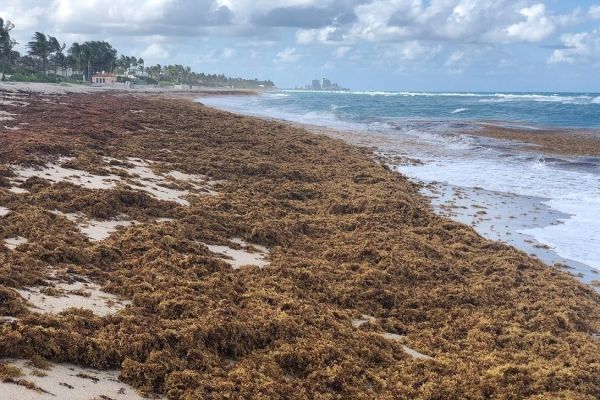For centuries, pelagic Sargassum, floating brown seaweed, have grown in low nutrient waters of the North Atlantic Ocean, supported by natural nutrient sources like excretions from fishes and invertebrates, upwelling and nitrogen fixation. Using a unique historical baseline from the 1980s and comparing it to samples collected since 2010, researchers from Florida Atlantic University’s Harbor Branch Oceanographic Institute and collaborators have discovered dramatic changes in the chemistry and composition of Sargassum, transforming this vibrant living organism into a toxic “dead zone.”
Their findings, published in Nature Communications, suggest that increased nitrogen availability from natural and anthropogenic sources, including sewage, is supporting blooms of Sargassum and turning a critical nursery habitat into harmful algal blooms with catastrophic impacts on coastal ecosystems, economies, and human health. Globally, harmful algal blooms are related to increased nutrient pollution.
The study, led by FAU Harbor Branch, in collaboration with the University of South Florida, Woods Hole Oceanographic Institution, the University of Southern Mississippi, and Florida State University, was designed to better understand the effects of nitrogen and phosphorus supply on Sargassum. Researchers used a baseline tissue data set of carbon (C), nitrogen (N) and phosphorus (P) and molar C:N:P ratios from the 1980s and compared them with more recent samples collected since 2010.
Continue reading at Florida Atlantic University
Image via Florida Atlantic University


